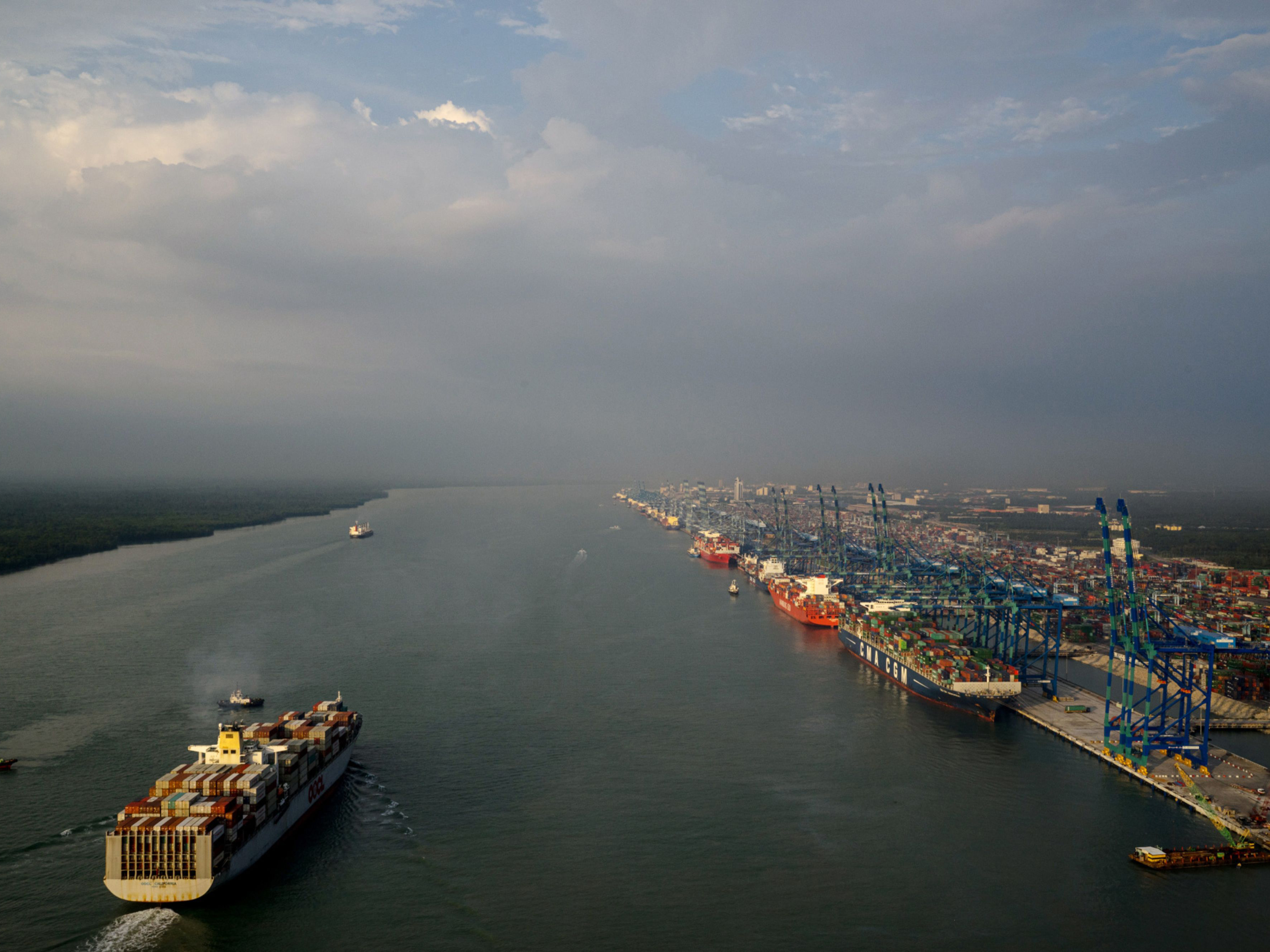
Visit Our Sponsors |
|
|
|
|
|
|
|
|
|
|
|
|
|
|
|
|
|
|
|
|
|
|
|
|
|
|
|
|
|
|
|
|
|
|
|
|
|
|
|
|
|
|
|
|
|
|
|
|
|
|
|
|
|
|
|
|
|
|
|

Severe weather disruptions hit Malaysia and the Philippines, leaving a trail of destruction among nations most prone to natural disasters.
Typhoon Rai, a super typhoon before slamming into the Philippines on Thursday, left 208 dead along its path. More than 440,000 people were displaced, with about a million affected, Mark Timbal, spokesman of the National Disaster Risk Reduction and Management Council, said on Monday.
Across peninsular Malaysia, a weekend of torrential rain displaced more than 61,000 people, shuttered roads and disrupted shipping. The downpour from Dec. 17 to 18 amounted to a month’s average rainfall, news agency Bernama cited Environment and Water Ministry Secretary-General Zaini Ujang as saying. Rains subsided on Sunday and flood waters have started to recede.
Port Disruptions
Cargo delivery and vessel berthing at Malaysia’s Port Klang, Southeast Asia’s second-biggest port, will be delayed as access roads are damaged and workers have not been able to get to work, authorities said Saturday.
Authorities have said they would prioritize delivering essential goods such as food and medical supplies for now, while lenders including RHB Bank Bhd. and OCBC Bank (Malaysia) Bhd. are offering assistance to their affected customers.
The disruption comes days after Intel Corp. unveiled a $7.1 billion investment in Malaysia and said it expects the global chip shortage to last until 2023. The country is a major chip testing and electronics hub, and delays in shipments could add to the supply chain snarls that have battered the world economy.
Netherland’s BE Semiconductor Industries NV cut its fourth-quarter revenue outlook on Monday due to flooding affecting its Shah Alam facility in Malaysia. The company said revenue may drop 15% to 20% sequentially, exceeding the previous guidance for a 5% to 15% decrease.
Japan’s Nihon Dempa Kogyo Co., a producer of quartz crystals products used in telecom and industrial equipment, said its Malaysian plant was damaged and it will need time to resume production. Panasonic Manufacturing Malaysia Bhd. said its facility that makes fans and vacuum cleaners sustained damage.
Malaysia’s Notion VTEC Bhd. said its plant that makes computer numerical control machining has been affected.
The downpour spared the world’s biggest rubber gloves sector, the Malaysian Rubber Glove Manufacturers Association President Panamanian Shanmugam said. It’s “just a little inconvenience in terms of transport services, which is already getting back to normal,” he said in an emailed reply to questions.
Top Glove Corp. and Hartalega Holdings Bhd. have their facilities in Selangor, an industrialized state surrounding Kuala Lumpur and among the hardest hit.
‘Running Out’
In the southern Philippines, the strongest typhoon to hit the country toppled power lines, leaving more than 200 cities and towns without electricity, while phone signal remains unavailable in many areas. Some sea and air terminals resumed operations, allowing relief activity.
“Food is running out,” Philippine Vice President Leni Robredo said of Dinagat Islands, a province in the Mindanao region she visited early on Monday. “There’s no power, no water and any means of communication.”
More than 54,000 homes were damaged, Timbal said. On the resort island of Siargao, where Rai first made landfall, the damage may reach $400 million, the Philippine Daily Inquirer reported, citing a local official.
Philippine President Rodrigo Duterte on Saturday said he will release 2 billion pesos ($40 million) in aid to affected areas, while Malaysian Prime Minister Ismail Sabri Yaakob on Sunday said 100 million ringgit ($23.7 million) would be allocated to repair the damage and affected households will get 1,000 ringgit each.
Annual economic loss due to disasters in Southeast Asia is estimated at $86.5 billion, according to a 2020 United Nations Economic and Social Commission for Asia and the Pacific report.
RELATED CONTENT
RELATED VIDEOS
Timely, incisive articles delivered directly to your inbox.


